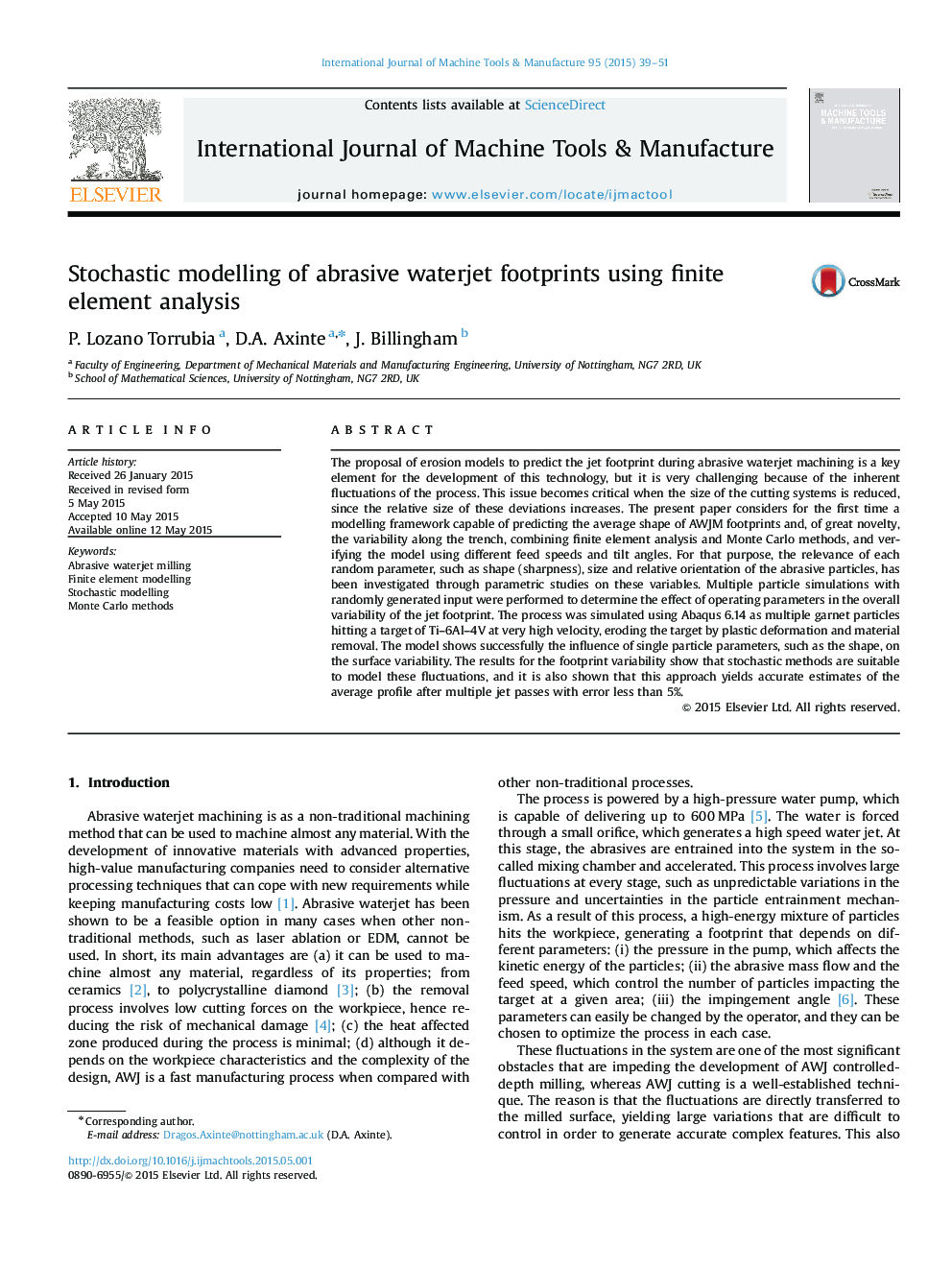| کد مقاله | کد نشریه | سال انتشار | مقاله انگلیسی | نسخه تمام متن |
|---|---|---|---|---|
| 780678 | 1464498 | 2015 | 13 صفحه PDF | دانلود رایگان |
• Monte Carlo simulations of particle impacts with different shape and orientation.
• A stochastic model using FEA to predict the standard deviation of an AWJ footprint.
• Investigation of effect the process parameters on the surface variability during AWJM.
• Simulation of multiple jet passes to investigate the overlapping of the variability.
The proposal of erosion models to predict the jet footprint during abrasive waterjet machining is a key element for the development of this technology, but it is very challenging because of the inherent fluctuations of the process. This issue becomes critical when the size of the cutting systems is reduced, since the relative size of these deviations increases. The present paper considers for the first time a modelling framework capable of predicting the average shape of AWJM footprints and, of great novelty, the variability along the trench, combining finite element analysis and Monte Carlo methods, and verifying the model using different feed speeds and tilt angles. For that purpose, the relevance of each random parameter, such as shape (sharpness), size and relative orientation of the abrasive particles, has been investigated through parametric studies on these variables. Multiple particle simulations with randomly generated input were performed to determine the effect of operating parameters in the overall variability of the jet footprint. The process was simulated using Abaqus 6.14 as multiple garnet particles hitting a target of Ti–6Al–4V at very high velocity, eroding the target by plastic deformation and material removal. The model shows successfully the influence of single particle parameters, such as the shape, on the surface variability. The results for the footprint variability show that stochastic methods are suitable to model these fluctuations, and it is also shown that this approach yields accurate estimates of the average profile after multiple jet passes with error less than 5%.
Journal: International Journal of Machine Tools and Manufacture - Volume 95, August 2015, Pages 39–51
